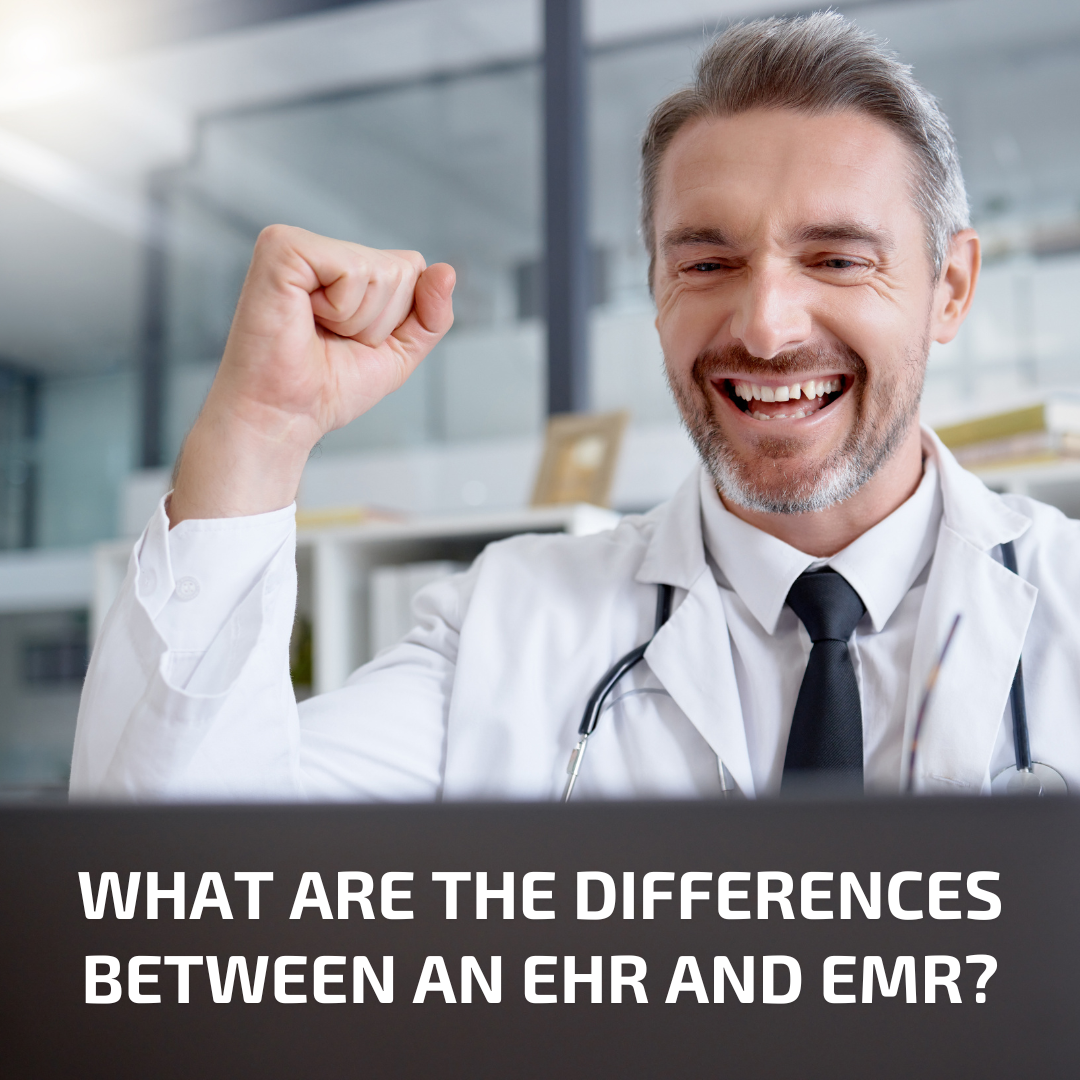In the world of digital health records, two acronyms dominate discussions: EHR (electronic health record) and EMR (electronic medical record). Though the terms might seem similar, an EHR is not the same as an EMR. But is an EHR or EMR more appropriate for your practice or setting?
In this post, we’ll guide you through the nuanced differences between EHRs and EMRs, present real-world use cases that highlight their unique advantages, and address why these two terms are often confused. By the end, you’ll have a clear understanding of how these digital health records revolutionize healthcare delivery and empower providers and patients.
Why Do People Mix Up EHR and EMR?
The most obvious reason: the names. The EHR and EMR acronyms are incredibly similar, leading many to believe they describe the same type of software. Additionally, as healthcare technology has advanced, the lines between EMRs and EHRs have become blurred. Many EMR systems now offer features that were once exclusive to EHRs, making it difficult to understand the distinctions between EHRs and EMRs. This leads to misuse of the terms.
But that’s why we’re here—to help clear this up!
What Is an Electronic Medical Record (EMR)?
An electronic medical record (EMR) is a digital version of a patient’s paper chart. It contains the medical and treatment history of a patient within one practice. EMRs have become increasingly common, replacing traditional paper charts in many healthcare settings.
Key Features of EMRs
- Digital Repository: EMRs serve as a digital repository of essential patient information, including basic patient demographics, comprehensive medical history, diagnoses, procedures, medications, and allergies.
- Documentation: Providers use EMRs to document their observations, treatment plans, and patient outcomes in progress notes.
- Laboratory and Test Results: EMRs store laboratory and test results, such as blood work and imaging reports, providing a comprehensive overview of a patient’s health.
What Is an Electronic Health Record (EHR)?
An electronic health record (EHR) goes beyond the scope of an EMR. Think of it like this: an EMR is a chapter in a patient’s medical story, while an EHR is the whole book. An EHR is a comprehensive collection of patient health information drawn from multiple sources, including hospitals, specialists, clinics, and laboratories. EHRs are designed to be shared across different healthcare settings, providing a holistic view of a patient’s medical history.
Key Features of EHRs
- All EMR Features: Includes all the information found in an EMR.
- Interoperability: Ability to exchange information with other healthcare providers and systems.
- Patient Portal Support: Allow patients to access their health information, schedule appointments, and communicate with providers.
- Decision Support Tools: Offer evidence-based recommendations to guide clinical decisions.
At a Glance: EHR and EMR Features
| Feature | EMR | EHR |
| Scope | Limited to a single practice or provider | Comprehensive, spanning multiple healthcare settings |
| Data Sharing | Limited sharing capabilities | Designed for interoperability, allowing data exchange with other providers and systems |
| Patient Access | Limited access through patient portals (if available) | Often includes integrated patient portals, or interfacing capabilities with third-party portal systems, for accessing health information and interacting with providers |
| Decision Support | May have basic clinical decision support tools | More advanced decision support tools integrated into the system |
| Use Cases | Primarily for individual patient care within a practice | Supports care coordination, population health management, research, and value-based care initiatives |
EMR and EHR Use Cases
EMR Use Cases:
- Tracking Patient Health: EMRs are instrumental in tracking patient health by monitoring chronic conditions and managing medications.
- Improving Clinical Workflows: By facilitating communication between care team members, EMRs improve clinical workflows and ensure a more coordinated approach to patient care.
- Generating Reports: The ability to generate reports from patient data enables healthcare providers to analyze trends and identify areas for quality improvement.
EHR Use Cases:
- Emergency Care: A patient rushed to the ER after a car accident has their medical history, including allergies and current medications, readily available through the EHR, facilitating prompt and appropriate treatment decisions.
- Care Transitions: A patient discharged from the hospital has their discharge summary, medication list, and follow-up instructions securely transmitted to their primary care physician through the EHR, ensuring continuity of care.
- Population Health Management: A public health official analyzes aggregated data from multiple EHRs to identify trends in chronic disease prevalence and vaccination rates, informing public health initiatives and resource allocation.
EHR and EMR: Conclusion
While both EMRs and EHRs play a vital role in modern healthcare, their distinct features and capabilities make them suitable for different purposes. EMRs are valuable for managing patient information within a single practice, while EHRs facilitate care coordination across the healthcare continuum. Understanding the differences between these two systems is crucial for healthcare providers to choose the right solution for their specific needs and for patients to be informed about how their health information is managed.
Want a more detailed historical perspective? Read about EHR and EMR history online courtesy of the Office of the National Coordinator for Health Information Technology, or ONC.
Curious about Fusion’s EHR solution? Read more here.

